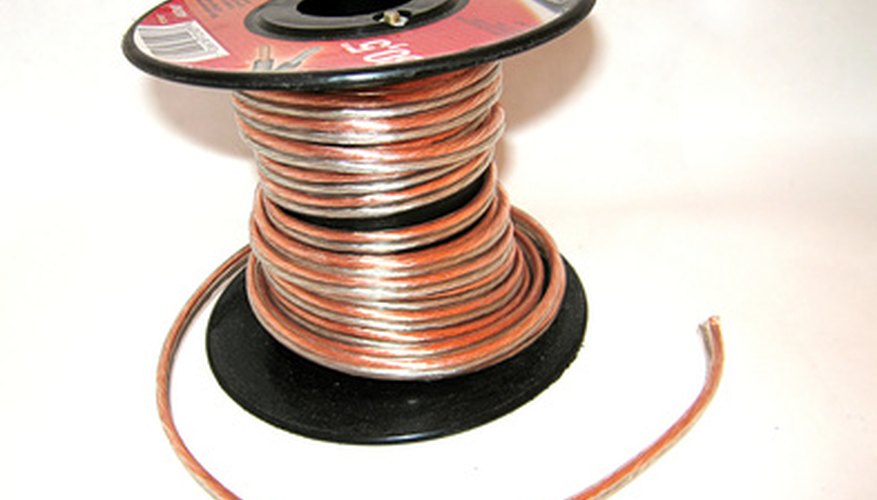Cables are an essential part of an entertainment system. Speaker cables connect an audio-video receiver to speakers at different corners of the room. AV cables connect components to the receiver. Even a modest home theatre system can resemble a snakes' nest with all the cables looping and coiling behind the components. When it's time to run speaker cables, the two main solutions are either to route the wires behind a wall, which involves drilling, or running the cables under the wall-to-wall carpet. A metal fish tape is the solution for getting those cables out of sight.
- Cables are an essential part of an entertainment system.
- A metal fish tape is the solution for getting those cables out of sight.
Pull up gently on the edge of the carpet next to the wall. Only a small section needs to be lifted, about two to three inches wide and no more than two inches above the floor.
Slip the looped end of a fish tape beneath the carpet and under the padding, if possible. The padding can help protect the cables that will be installed beneath the carpet.
Peel off the fish tape from its reel, guiding the end of the tape toward the other wall where the wire will emerge from under the carpet. Work slowly to avoid snagging the underside of the carpet or getting stuck on the padding.
- Slip the looped end of a fish tape beneath the carpet and under the padding, if possible.
- Peel off the fish tape from its reel, guiding the end of the tape toward the other wall where the wire will emerge from under the carpet.
Lift the carpet near the wall when the tip of the fish tape reaches its destination, then pull the looped end of the fish tape from beneath the carpet.
Tie the end of the cable to the loop on the fish tape with an overhand knot, then gently push the end of the fish tape back underneath the carpet.
Retrieve the fish tape back to the reel, dragging the cable along with the end of the fish tape beneath the carpet.
Pull out the end of the fish tape to remove the tool from under the carpet, then untie the cable and leave a short length protruding from the carpet so the cable does not slip back under the carpet and become lost.
TIP
Speaker cables are relatively flat and less likely to create a telltale lump in the carpet running the length of the room. Larger cables, such as for hooking up a subwoofer, will be more noticeable. For this reason, installing larger cables behind a wall, rather than beneath the carpet, reduces the risk of cable damage or spoiling the appearance of the carpet..
WARNING
Do not run electrical cables under carpet. The repeated weight of walking acorss the carpet can wear down and crack the insulation, creating risk of fire and electrical shock.
